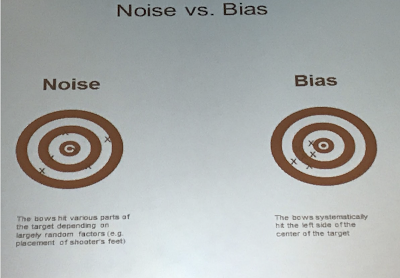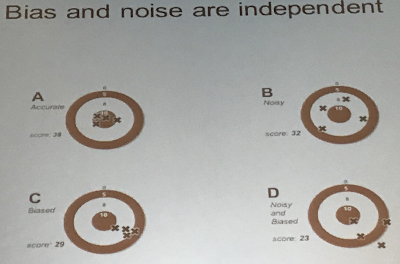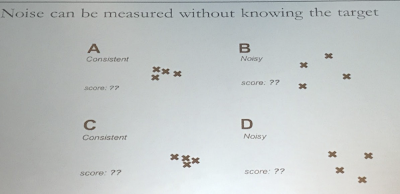“We have too much emphasis on bias and not enough emphasis on random noise”
– Dan Kahneman Speaking at the Kahneman-Treisman Center for Behavioral Science and Public Policy
There have been extensive discussions about behavioral biases in decision-making. The academic and popular articles on the bias topic are endless and there is a huge cottage industry for finding and cataloging biases, but is bias the core enemy of good decision-making?
Perhaps the bigger issue is noise – the random errors that create decision risk and uncertainty. The spread and inconsistency of noise can actually be more harmful to making good decisions. Noisy decision errors are pervasive but can be reduced. This is the conclusion of Dan Kahneman who certainly has been one of the leaders in the field of behavioral economics.
We usually think of noise as measurement error and bias as judgment error but that is an inappropriate dichotomy. Noise is created by our judgment when we don’t behave the same for similar decisions. Noise is an invisible problem because we don’t believe we can create it. Noise is random, yet it is persistent when we don’t follow an algorithm. Algorithms will shrink the noise both for your own decision-making and across any set of analysts looking at the same problem.
There is measurement noise within us. If we are presented the same problem, say rating a wine, our current assessment may not agree with our judgment from a prior evaluation. If we use a panel of wine judges we would not get the same assessment cross-sectionally. There is noise because everyone cannot agree on what is quality. Just think of the noise that is possible if the judgment needed is for something that is especially complex.
Kahneman is very direct on the issue of noise. If there is judgment, there will be noise. The noise can come from any number of sources, but it will exist. The core value of an algorithm is its bland sameness when facing a judgment. There will be less noise when we approach a judgment in the same way. We can identify behavioral biases, but the core problem of noise while subtle is actually simpler. Use repeatable tools to drop judgment errors.



